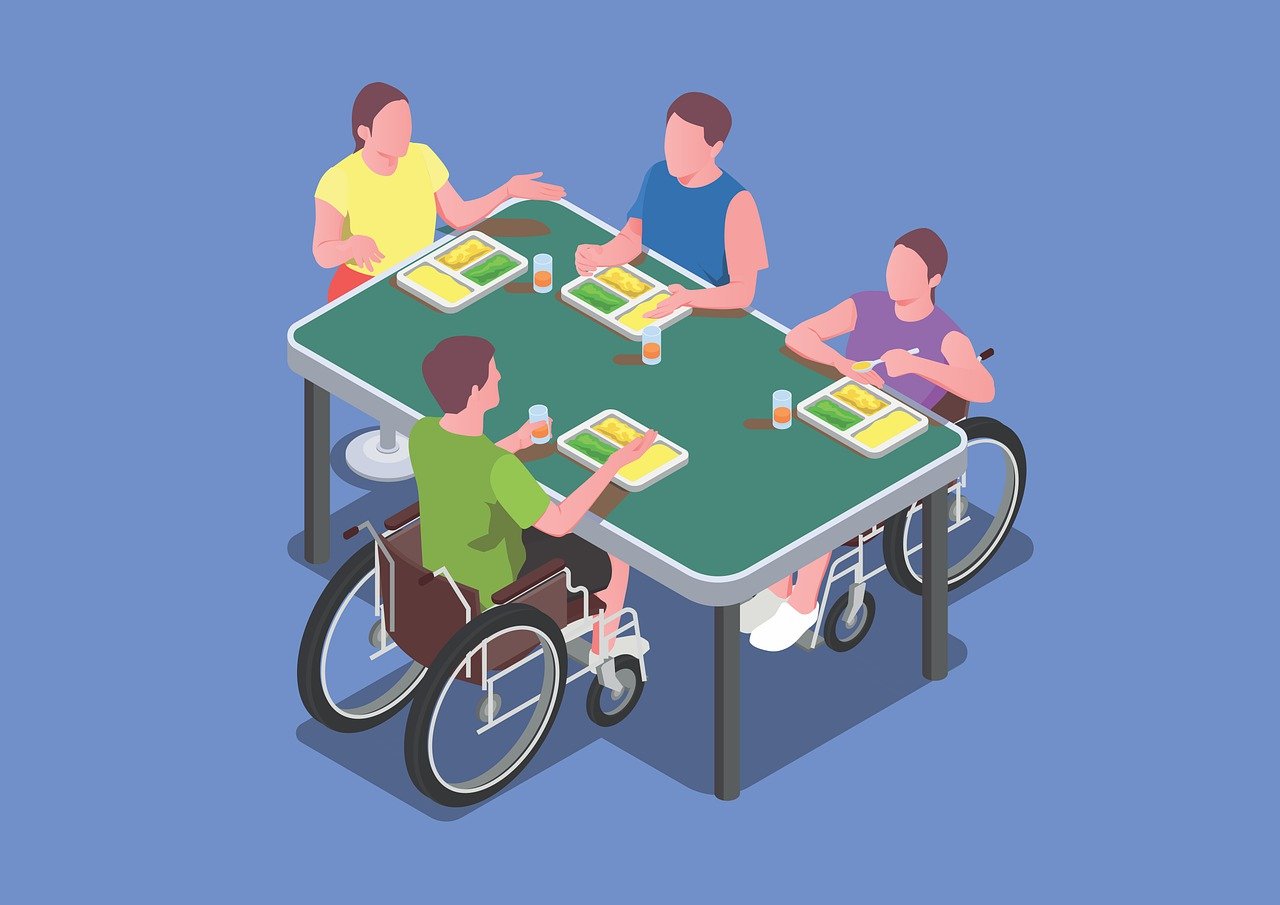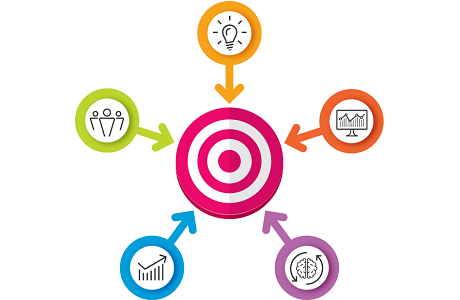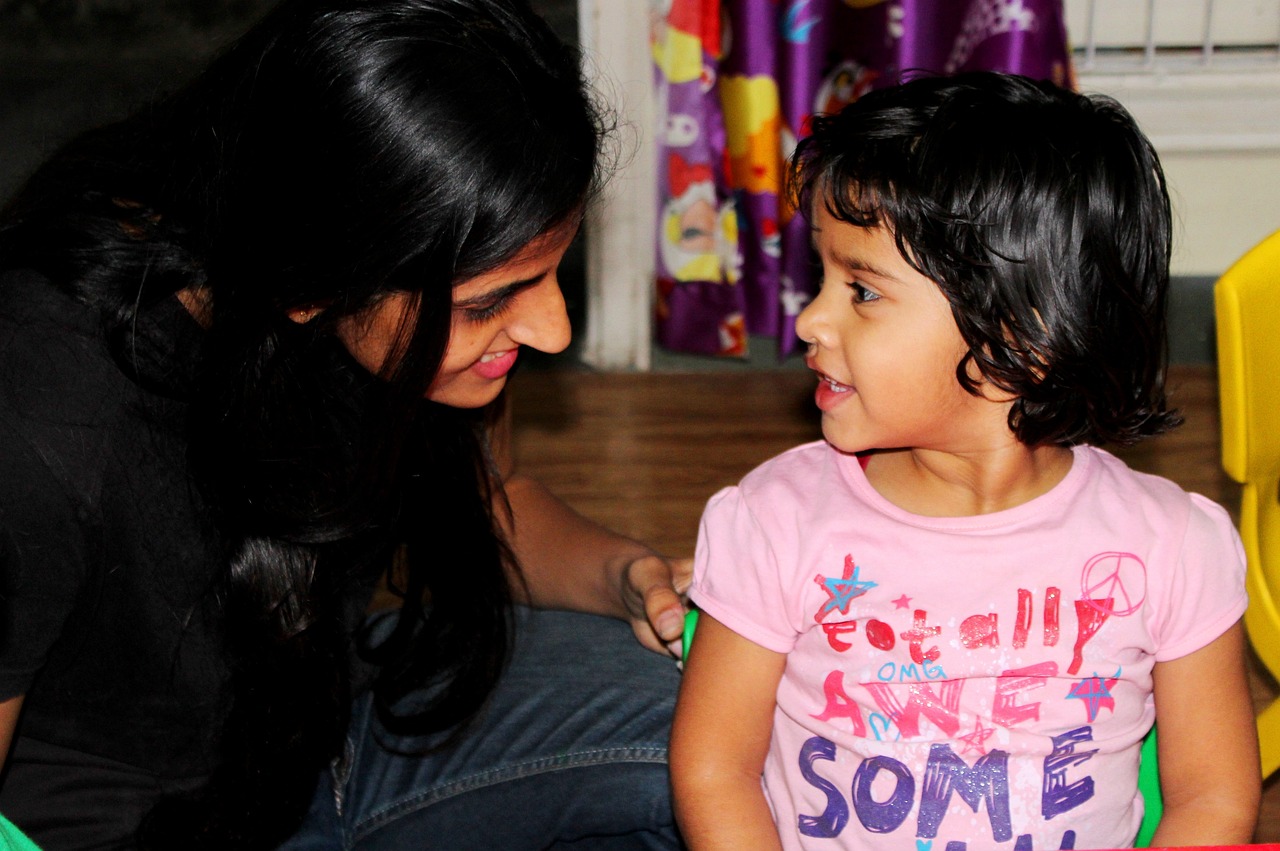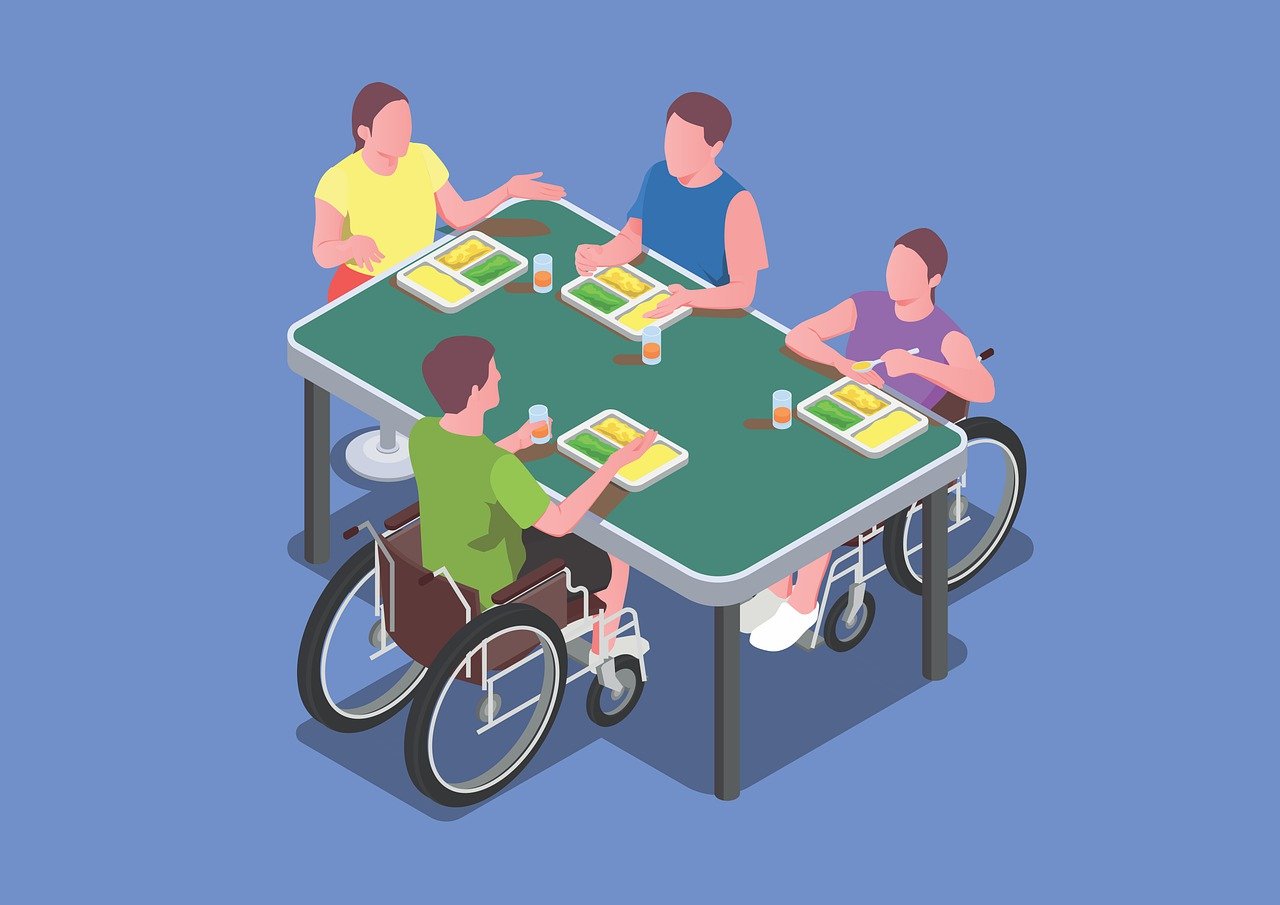Table of Contents
Inclusive education is a powerful concept that transcends mere classroom dynamics; it’s a philosophy that embodies the fundamental principle that every student, regardless of their abilities, background or characteristics, has the right to quality education. It’s about creating an educational environment where diversity is not just tolerated but celebrated. In this article, we’ll explore the essence of inclusive education, its benefits and the strategies that educators employ to ensure that every student’s unique needs are met.
Inclusive education is a powerful concept that transcends mere classroom dynamics; it’s a philosophy that embodies the fundamental principle that every student, regardless of their abilities, background or characteristics, has the right to quality education. It’s about creating an educational environment where diversity is not just tolerated but celebrated. In this article, we’ll explore the essence of inclusive education, its benefits and the strategies that educators employ to ensure that every student’s unique needs are met.
The Essence of Inclusive Education
At its core, inclusive education is about equality, respect and the belief that every individual has something valuable to contribute to the learning community. It’s a commitment to recognizing and valuing the unique strengths and challenges of each student. Inclusive education goes beyond physical integration; it strives to remove barriers to learning, promote social inclusion and ensure that all students have access to the same opportunities and resources.
Benefits of Inclusive Education
Diversity Enriches Learning: Inclusive classrooms expose students to diverse perspectives, experiences and cultures. This diversity enriches the learning environment and prepares students for a globalized world where the ability to work with people from different backgrounds is essential.
Promotes Empathy and Understanding: Inclusive education fosters empathy and understanding among students. They learn to appreciate differences, develop compassion and become advocates for inclusivity and social justice.
Improved Academic Outcomes: Research has shown that students in inclusive settings often achieve higher academic outcomes. Inclusion provides tailored support to students with diverse learning needs, helping them excel academically.
Enhanced Problem-Solving Skills: Inclusive classrooms encourage students to work collaboratively and find creative solutions to problems. This collaborative approach builds critical thinking and problem-solving skills that are valuable in various aspects of life.
Prepares for the Real World: Inclusive education prepares students for the real world, where they will encounter diverse individuals and situations. It equips them with the skills and attitudes needed to navigate an inclusive society and workforce.
Boosts Self-Esteem: Inclusion sends a powerful message to students that they are valued and accepted for who they are. This acceptance boosts self-esteem and self-confidence, contributing to overall well-being.
Strategies for Inclusive Education
Differentiated Instruction: Teachers use differentiated instruction techniques to accommodate diverse learning styles and abilities. This approach ensures that all students receive instruction tailored to their needs.
Universal Design for Learning (UDL): UDL principles involve designing instruction, materials and assessments to be accessible to all students. It recognizes that students have varying strengths and challenges and aims to provide multiple ways for them to engage with the content.
Collaborative Teaching: Collaborative teaching involves educators working together to support students with diverse needs. Special education teachers, general education teachers and other specialists collaborate to provide a holistic approach to education.
Peer Support Programs: Implementing peer support programs, where students help each other, fosters a sense of community and inclusion. Peer tutoring, mentoring and buddy systems can be effective in promoting peer relationships and academic growth.
Professional Development: Educators benefit from ongoing professional development to learn about inclusive practices, effective strategies for diverse learners and the latest research in special education.
Parent and Community Engagement: Inclusive education is a collaborative effort that involves parents and the broader community. Schools can create forums for parents to provide input, share their concerns and be actively involved in their children’s education.
Individualized Education Plans (IEPs): For students with disabilities, IEPs outline specific goals, accommodations and support services to ensure their unique needs are met. Regular review and updates to IEPs are essential for tracking progress.
In conclusion, inclusive education is not just an educational framework; it’s a commitment to valuing diversity and ensuring that every student has an equal opportunity to learn and thrive. It promotes a sense of belonging, empathy and respect among students and prepares them for a more inclusive and equitable future. By implementing inclusive practices and embracing diversity, educators and schools can truly make a difference in the lives of all their students.
For a comprehensive look at this subject, we invite you to read more on this dedicated page: Inclusive Teaching Strategies | Poorvu Center for Teaching and …
The Essence of Inclusive Education
Inclusive education is rooted in the belief that diversity is a strength, not a hindrance. It is a commitment to providing all students, including those with disabilities, special needs or differing cultural backgrounds, with equitable access to educational opportunities. In an inclusive classroom, differences are acknowledged, respected and accommodated, fostering an environment where every student can thrive.
Inclusive education transcends the traditional boundaries of classrooms, offering a transformative approach that extends well beyond the academic realm. Here’s a deeper exploration of the significance of inclusive education:
Fostering Empathy and Understanding: Inclusive education is a powerful tool for building empathy and understanding among students. When students of diverse backgrounds and abilities learn side by side, they gain a deeper appreciation for one another’s unique experiences and perspectives. This not only promotes tolerance but also lays the groundwork for a more inclusive and harmonious society.
Promoting Social Integration: Inclusive education provides a natural setting for students to interact with peers from various backgrounds. It breaks down barriers and stereotypes, facilitating social integration. Students learn to appreciate differences and form friendships that can last a lifetime.
Enhancing Problem-Solving Skills: Inclusive classrooms encourage students to collaborate and problem-solve together. They learn how to work effectively in diverse teams, honing essential skills for the future workplace and for addressing complex societal issues.
Nurturing Individual Potential: Inclusive education recognizes that every student has unique talents and abilities. It provides personalized support and accommodations to help each student reach their full potential, regardless of their starting point. This approach ensures that no student’s talents go undiscovered or undeveloped.
Reducing Stigma: By placing students with disabilities or special needs in mainstream classrooms, inclusive education helps reduce the stigma often associated with differences. It sends a powerful message that diversity is to be celebrated rather than marginalized.
Meeting Legal and Ethical Obligations: Many countries have recognized the importance of inclusive education by enacting laws and policies that mandate equal educational opportunities for all. Inclusive education not only complies with legal requirements but also aligns with ethical principles of equity and social justice.
Preparing Students for the Real World: In the real world, people interact with individuals from diverse backgrounds and abilities. Inclusive education prepares students for this reality by giving them the skills and mindset needed to thrive in a global, inclusive society.
Empowering Teachers: Inclusive education challenges teachers to adapt their teaching methods and create a flexible, responsive classroom environment. It empowers educators to become more innovative, compassionate and adaptable in their practice.
Enhancing Parental Involvement: Inclusive education often requires close collaboration between teachers, parents and support professionals. This collaboration strengthens the bonds between schools and families, creating a united front to support each student’s educational journey.
Inspiring Inclusivity in the Community: Inclusive schools can serve as beacons of inclusivity, inspiring communities to embrace diversity and equity. They demonstrate that inclusion is not just an educational philosophy but a way of life that benefits everyone.
Inclusive education is not merely an educational approach; it’s a commitment to building a more inclusive, empathetic and equitable society. By valuing diversity and providing equitable opportunities, we pave the way for a brighter future where every individual can thrive, contribute and participate fully in all aspects of life.
If you’d like to dive deeper into this subject, there’s more to discover on this page: Diversity and Learning Together: The Essence of Inclusive …

Promoting Diversity and Inclusion
Inclusive classrooms reflect the real world, where individuals from diverse backgrounds interact. By embracing diversity, students learn to appreciate differences, which contributes to a more inclusive society.
Inclusive classrooms are a microcosm of the broader world, mirroring the rich tapestry of diversity that characterizes society at large. By fostering inclusivity in the educational setting, we empower students with valuable life lessons that extend far beyond the classroom walls. In doing so, we help cultivate a generation of individuals who not only appreciate differences but actively work towards building a more inclusive and harmonious society.
In an inclusive classroom, students encounter peers with a wide array of backgrounds, abilities and perspectives. This exposure provides them with the opportunity to learn firsthand about various cultures, traditions and life experiences. As they engage with their diverse classmates, students develop empathy, understanding and respect for the unique attributes that each person brings to the table.
This exposure to diversity not only broadens students’ horizons but also equips them with essential life skills. They learn to communicate effectively with people from different backgrounds, fostering the development of strong interpersonal and intercultural competencies. These skills are invaluable in today’s interconnected world, where collaboration across borders and cultures is increasingly the norm.
Moreover, inclusive classrooms lay the foundation for a more inclusive society by challenging stereotypes and biases. Students are encouraged to question preconceived notions and biases, promoting critical thinking and open-mindedness. When students see their classmates excelling regardless of their background, it challenges stereotypes and inspires them to see the potential in everyone, regardless of their differences.
Inclusivity in the classroom also helps combat discrimination and prejudice. By creating an environment where diversity is celebrated and respected, schools send a powerful message that discrimination has no place in our society. This can lead to a ripple effect as students carry these values into their communities, workplaces and beyond.
Ultimately, inclusive classrooms serve as laboratories for building a more inclusive society. They nurture the next generation of leaders, advocates and change-makers who will go on to create a world that values diversity, equity and inclusion. As students graduate from these classrooms, they are not only academically prepared but also socially and emotionally equipped to contribute to a society that celebrates and thrives on its rich tapestry of differences. In this way, inclusive classrooms are not just about education; they are about shaping a better future for us all.
To delve further into this matter, we encourage you to check out the additional resources provided here: The Value of Inclusive Education – Open Society Foundations

Enhancing Academic Achievement
Research has shown that inclusive education can lead to improved academic outcomes for all students. When students with diverse abilities learn together, they often support and motivate each other, leading to better overall achievement.
In the ever-evolving landscape of education, the concept of inclusive education has emerged as a beacon of progress and equality. Research has unequivocally demonstrated that inclusive classrooms, where students of diverse abilities and backgrounds learn together, offer a multitude of benefits that extend far beyond academic achievements.
At the heart of inclusive education is the principle that every student, regardless of their unique needs and abilities, has a fundamental right to access quality education in a supportive and inclusive environment. Contrary to traditional segregated settings, inclusive classrooms foster an atmosphere of acceptance and respect for individual differences.
One of the most compelling findings in educational research is that inclusive education leads to improved academic outcomes for all students. When students with diverse abilities learn side by side, a dynamic and enriching environment is created. This diversity becomes a wellspring of learning opportunities. Students learn not only from their teachers but also from one another.
Inclusive classrooms often give rise to a peer support system where students naturally help and motivate each other. Those with stronger skills and knowledge offer assistance and guidance to their peers who may be struggling in certain areas. This peer learning not only enhances the academic progress of those in need but also reinforces the understanding of the students providing support. This reciprocity of learning creates a positive cycle of collaboration and academic growth.
Moreover, inclusive education cultivates a sense of empathy and understanding among students. They learn to appreciate and respect differences, recognizing that every individual has unique strengths and challenges. This not only prepares students for a more inclusive and diverse society but also reduces the stigma associated with disabilities or differences.
Inclusive classrooms are also advantageous for students with disabilities or special needs. They have the opportunity to participate in regular education alongside their peers, providing them with a sense of belonging and reducing feelings of isolation. This sense of belonging can have a profound impact on their self-esteem and overall well-being, which, in turn, can positively influence their academic performance.
In essence, inclusive education is a win-win situation. It empowers all students to reach their full potential academically and socially, while also fostering a more inclusive and compassionate society. As educators, policymakers and communities continue to embrace and advocate for inclusive education, the transformative power of diverse and inclusive classrooms will continue to benefit generations of students, making education not only about academic achievement but also about creating a more equitable and harmonious world.
Looking for more insights? You’ll find them right here in our extended coverage: Guiding Principles for Creating Safe, Inclusive, Supportive, and Fair …

Building Empathy and Compassion
Inclusive education nurtures empathy and compassion. Students learn to understand and appreciate the challenges faced by their peers, which can lead to lifelong values of empathy and inclusivity.
Inclusive education is a transformative force that not only shapes the academic landscape but also molds the very character of individuals. Beyond the textbooks and classroom walls, it fosters a profound sense of empathy and compassion among students, planting seeds that can flourish into lifelong values of inclusivity.
Within an inclusive learning environment, students are exposed to the rich tapestry of human diversity. They interact with classmates who have a wide range of abilities, backgrounds and experiences. In this diverse community, they come to appreciate the unique perspectives and talents that each person brings to the table. Through shared experiences and collaborative problem-solving, students begin to understand the challenges their peers face, whether related to physical disabilities, cultural differences or learning variations.
This understanding serves as the catalyst for empathy. Students learn to put themselves in the shoes of their classmates, imagining the obstacles and triumphs others encounter on their journey. It is through this process that empathy takes root, allowing students to connect on a deeper level with their peers and develop a genuine concern for their well-being.
As students become more attuned to the challenges faced by their classmates, they naturally gravitate towards acts of kindness and support. They offer a helping hand to those in need, championing inclusivity and making efforts to ensure that no one feels left behind. Inclusive education becomes a breeding ground for compassion, as students learn that their actions can have a profound impact on the lives of others.
These values of empathy and inclusivity instilled in inclusive classrooms have far-reaching consequences. As students mature and enter the broader world, they carry with them the understanding that diversity is a strength, not a weakness. They become advocates for equal opportunities and inclusivity in all facets of society, whether in the workplace, community organizations or policy advocacy.
In essence, inclusive education is a powerful force for shaping not only academic success but also the very essence of who students become as individuals. It nurtures empathy and compassion, fostering a generation that not only understands and appreciates the challenges faced by others but actively seeks to create a world where everyone is included, respected and valued for who they are. In this way, inclusive education contributes to the building of a more compassionate, understanding and harmonious society.
For a comprehensive look at this subject, we invite you to read more on this dedicated page: 5 Inclusive Classroom Strategies To Build A Safe Community | EVERFI

Preparation for the Real World
In an increasingly diverse world, inclusive education prepares students to interact with people from various backgrounds, abilities and perspectives. It equips them with the skills needed for success in a globalized society.
In an increasingly diverse world, inclusive education serves as a cornerstone for fostering empathy, tolerance and understanding among students. It goes beyond mere academic knowledge and prepares students to navigate the complex tapestry of humanity. Inclusive education empowers learners to embrace the richness of differences, whether they be cultural, linguistic, socioeconomic or related to abilities.
By exposing students to diverse backgrounds, abilities and perspectives, inclusive education lays the foundation for a more harmonious and cooperative society. It encourages students to challenge stereotypes, break down barriers and appreciate the unique contributions each individual brings to the table.
Moreover, inclusive education isn’t limited to the classroom; it extends into the fabric of society itself. It equips students with the skills and mindset needed to thrive in a globalized society where collaboration across borders is the norm. The ability to work effectively with people from various backgrounds becomes an essential life skill, enhancing not only personal growth but also employability in a world where international connections and intercultural competencies are highly valued.
Inclusive education, therefore, isn’t just about creating a more equitable learning environment; it’s about nurturing compassionate, adaptable and globally aware citizens who can contribute positively to a world that is as diverse as it is interconnected. As the world continues to evolve, inclusive education remains a crucial catalyst for building a more inclusive and harmonious future for all.
To expand your knowledge on this subject, make sure to read on at this location: preparing our youth for an inclusive and sustainable world | oecd

Differentiated Instruction
Teachers tailor their teaching methods and materials to meet the unique needs of each student. This ensures that all students, regardless of their abilities, can access the curriculum.
Teachers play a pivotal role in education by embracing the diverse range of abilities and learning styles present in their classrooms. They dedicate themselves to the art of customization, tailoring their teaching methods and materials to suit the specific needs of each student. This commitment ensures that every student, regardless of their individual strengths or challenges, has the opportunity to fully engage with and benefit from the curriculum.
In this inclusive approach, teachers act as educational architects, designing lessons that cater to various learning preferences, cognitive levels and even socio-emotional needs. They might employ differentiated instruction techniques, providing multiple pathways for students to grasp and apply concepts. This not only accommodates diverse learners but also fosters an environment where every student feels valued and supported in their educational journey.
Moreover, by adapting their teaching strategies, educators help bridge the gap between students with varying abilities. This approach promotes a sense of equity and fairness within the classroom, empowering all learners to reach their full potential. It’s a testament to the belief that education is not one-size-fits-all but rather a dynamic, personalized experience that strives to unlock the unique potential within each student.
Ultimately, teachers who tailor their teaching methods acknowledge that the true measure of educational success is not solely based on standardized tests or rigid benchmarks but on the growth and development of each individual. By doing so, they not only empower students to thrive academically but also equip them with the confidence and skills needed to excel in an ever-changing world. This dedication to customization ensures that education remains a truly inclusive and transformative force in the lives of all students.
For additional details, consider exploring the related content available here Differentiated Instruction and How to Implement It | Learning A-Z

Universal Design for Learning (UDL)
UDL is an approach that aims to make education accessible to all students from the outset. It involves creating flexible lesson plans and using varied teaching methods to accommodate diverse learning styles.
“Universal Design for Learning (UDL) stands as a beacon of inclusivity in the world of education, striving to ensure that no student is left behind. At its heart, UDL is a proactive approach that advocates for educational inclusivity from the very beginning. It acknowledges that every student is unique, with their own set of strengths and challenges and seeks to create an environment where every learner can thrive.
UDL is about more than just accommodating differences; it’s about celebrating them. To achieve this, educators craft lesson plans that are inherently flexible and adaptable. They incorporate multiple means of representation, allowing students to access information in ways that suit their individual preferences. Whether through text, visuals, audio or interactive experiences, UDL provides a diverse range of options to ensure content is accessible to all.
Variety is also at the core of UDL when it comes to teaching methods. Educators employ an array of strategies to engage students with differing learning styles. This might involve hands-on activities, group discussions, multimedia presentations or individual research projects. By offering multiple pathways for learning, UDL empowers students to choose the methods that resonate with them, fostering a sense of ownership and motivation in their education.
Furthermore, UDL doesn’t stop at the classroom door. It extends to the digital realm, ensuring that online resources and platforms are designed with accessibility in mind. From screen readers for visually impaired students to closed captions for those with hearing impairments, UDL guarantees that no digital barrier impedes a student’s ability to learn.
In embracing UDL, education becomes a more inclusive, equitable and empowering experience. It recognizes that the richness of diversity enhances the educational journey for everyone involved. By embracing UDL principles, educators pave the way for a future where all students have the opportunity to succeed, regardless of their unique abilities or challenges.”
Don’t stop here; you can continue your exploration by following this link for more details: Universal Design for Learning: Meeting the Needs of All Students …

Collaborative Teamwork
Inclusive education often involves collaboration between teachers, special education professionals, therapists and parents. Working together, they can identify and address the specific needs of each student.
Inclusive education represents a collective effort, a harmonious symphony of collaboration among various key stakeholders in a student’s life. This essential partnership transcends the boundaries of traditional education, where teachers, special education professionals, therapists and parents unite to ensure that every student, regardless of their abilities or challenges, receives the support and resources they require.
This collaborative approach is not merely about bringing these diverse individuals together in the same room; it’s about fostering a deep understanding of each student’s unique strengths, weaknesses and learning styles. By combining their expertise and insights, these stakeholders can construct a holistic view of the student, identifying not only their academic needs but also their emotional, social and physical requirements.
Teachers, at the forefront of this alliance, serve as the bridge between knowledge and students. Special education professionals bring specialized skills and strategies, while therapists offer invaluable insights into the physical and emotional well-being of the students. Parents, with their intimate knowledge of their child’s history and aspirations, provide the essential link between home and school.
Together, they create a support network that not only identifies challenges but actively seeks out innovative solutions. They adapt teaching methodologies, curricula and environments to ensure that no student is left behind. In this holistic approach, the focus is not on fitting students into pre-existing molds but on crafting an educational experience tailored to their unique needs and abilities.
Furthermore, this collaborative model extends beyond the classroom, embracing the broader community. It fosters empathy, understanding and a sense of shared responsibility for the success and well-being of every student. Inclusive education, therefore, not only benefits those directly involved but enriches the entire educational ecosystem, creating a more compassionate and equitable society in the process. Ultimately, it is this collective effort that empowers students to thrive in a diverse and inclusive world, ensuring that no one is left behind on their educational journey.
Don’t stop here; you can continue your exploration by following this link for more details: Inclusive Education: Embracing Diversity and Empowering Every …

Supportive Classroom Environment
Creating an inclusive classroom environment means fostering a culture of respect, acceptance and empathy. Teachers set the tone by modeling inclusive behavior and promoting positive peer interactions.
Creating an inclusive classroom environment means fostering a culture of respect, acceptance and empathy. Teachers set the tone by modeling inclusive behavior and promoting positive peer interactions. This commitment to inclusivity goes beyond just the classroom; it is a fundamental building block for a more equitable and compassionate society.
In an inclusive classroom, diversity is not just acknowledged but celebrated. Students from various backgrounds, with different abilities and unique perspectives are valued for the rich tapestry they contribute to the learning experience. This diversity is not seen as a challenge but as an opportunity for growth, learning and increased cultural competency.
Teachers play a pivotal role in cultivating an atmosphere where every student feels seen, heard and valued. They use a variety of teaching strategies that cater to diverse learning styles and abilities, ensuring that no student is left behind. By doing so, they empower students to embrace their individuality and feel confident in their capabilities.
Beyond the academic curriculum, an inclusive classroom provides space for open dialogue about social issues, prejudice and discrimination. This encourages students to develop critical thinking skills and empathy, enabling them to challenge stereotypes and biases. In doing so, they are better prepared to be responsible, compassionate citizens who contribute positively to their communities.
Furthermore, an inclusive classroom environment extends to promoting inclusive literature, diverse role models and culturally relevant content. This helps students see themselves represented in the materials they study, fostering a sense of belonging and pride in their heritage.
In conclusion, creating an inclusive classroom environment is not just about effective teaching; it’s about nurturing a culture of respect, acceptance and empathy. It’s about preparing students not only for academic success but also for a future where they can thrive in a diverse and interconnected world. Teachers who prioritize inclusivity are not only educators but also agents of positive social change, shaping the next generation to be more understanding and inclusive in their interactions with others.
Additionally, you can find further information on this topic by visiting this page: The Value of Inclusive Education – Open Society Foundations

Inclusive education is not just about accommodating differences; it’s about celebrating them. It’s a philosophy that recognizes the inherent value of every student and seeks to provide them with the tools, resources and support they need to succeed. By embracing diversity and implementing strategies that meet the unique needs of each student, educators can create classrooms where every child feels valued and empowered. Inclusive education not only benefits individual students but also contributes to a more compassionate and inclusive society, ultimately making the world a better place for everyone.
Inclusive education is not just about accommodating differences; it’s about celebrating them. It’s a philosophy that recognizes the inherent value of every student and seeks to provide them with the tools, resources and support they need to succeed. By embracing diversity and implementing strategies that meet the unique needs of each student, educators can create classrooms where every child feels valued and empowered.
In this inclusive environment, differences are not viewed as obstacles to overcome but as strengths to harness. Students learn from each other’s experiences, backgrounds and abilities, fostering a rich tapestry of perspectives within the classroom. This diversity not only broadens students’ horizons but also prepares them for the multicultural and interconnected world they will encounter beyond school.
Inclusive education is a powerful means of fostering empathy and understanding. When students interact with peers who have different abilities, backgrounds or challenges, they develop a greater sense of compassion and acceptance. They learn to appreciate the beauty of uniqueness and the importance of treating everyone with respect and kindness. These lessons extend far beyond the classroom, contributing to a more compassionate and inclusive society.
Furthermore, inclusive education helps break down barriers and combat stereotypes. When students with disabilities or from marginalized backgrounds are integrated into mainstream classrooms, it challenges preconceived notions and dispels misconceptions. This creates a more inclusive society where diversity is not just tolerated but embraced and celebrated.
Inclusive education also empowers students with disabilities to reach their full potential. It equips them with the skills and confidence needed to succeed in an inclusive world. When barriers are removed, students with disabilities can showcase their talents and contributions, debunking the idea that they are limited by their conditions.
Moreover, inclusive education benefits all students academically. Tailored teaching approaches that accommodate various learning styles and abilities can help struggling students catch up while providing advanced learners with opportunities to excel. The collaborative atmosphere of inclusive classrooms promotes problem-solving and critical thinking skills, preparing all students for the challenges of the future.
In conclusion, inclusive education is a transformative philosophy that celebrates diversity and empowers every student to reach their full potential. It fosters empathy, breaks down stereotypes and prepares students for a more inclusive and compassionate society. By embracing and championing inclusive education, we not only create better educational environments but also contribute to making the world a more equitable and understanding place for everyone.
To expand your knowledge on this subject, make sure to read on at this location: Disabilities Inclusive Education Systems and Policies Guide for Low …
More links
Looking for more insights? You’ll find them right here in our extended coverage: 4 Benefits of Inclusion Classrooms
